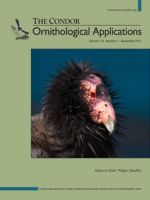Critically endangered species that have undergone severe population bottlenecks often have little remaining genetic variation, making it difficult to reconstruct population histories to apply in reintroduction and recovery strategies. By using ancient DNA techniques, it is possible to combine genetic evidence from the historical population with contemporary samples to provide a more complete picture of a species' genetic variation across its historical range and through time. Applying this approach, we examined changes in the mitochondrial DNA (mtDNA) control region (526 base pairs) of the endangered California Condor (Gymnogyps californianus). Results showed a >80% reduction in unique haplotypes over the past 2 centuries. We found no spatial sorting of haplotypes in the historical population; the periphery of the range contained haplotypes that were common throughout the historical range. Direct examination of mtDNA from California Condor museum specimens provided a new window into historical population connectivity and genetic diversity showing: (1) a substantial loss of haplotypes, which is consistent with the hypothesis that condors were relatively abundant in the nineteenth century, but declined rapidly as a result of human-caused mortality; and (2) no evidence of historical population segregation, meaning that the available genetic data offer no cause to avoid releasing condors in unoccupied portions of their historical range.
How to translate text using browser tools
21 September 2016
Ancient DNA reveals substantial genetic diversity in the California Condor ( Gymnogyps californianus) prior to a population bottleneck
Jesse D'Elia,
Susan M. Haig,
Thomas D. Mullins,
Mark P. Miller

The Condor
Vol. 118 • No. 4
November 2016
Vol. 118 • No. 4
November 2016
ancient DNA
California condor
endangered species
genetic bottleneck
genetic variation
mitochondrial DNA
museum specimens




